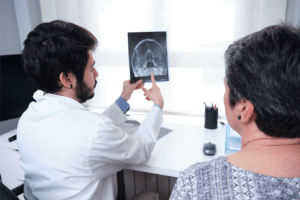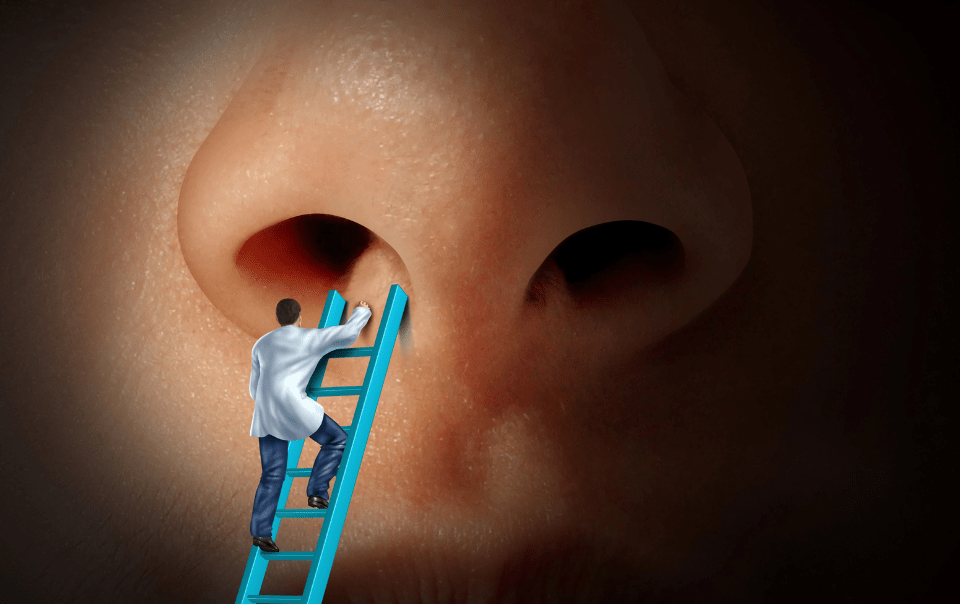Turbinate reduction surgery is a common procedure for addressing nasal congestion and breathing difficulties. A common question patients have about the procedure is whether turbinates regrow after removal. To help you better understand the intricacies of turbinate reduction, take a look at the factors influencing tissue regeneration, potential regrowth, and the implications for patients seeking long-term relief from nasal obstruction.
The Role of Turbinates in Nasal Function
First, it’s crucial to understand the role of turbinates in nasal function. The turbinates, also known as nasal conchae, play a crucial role in nasal function. These bony structures, located inside the nasal passages, help regulate airflow and maintain optimal conditions for respiratory processes. There are three pairs of turbinates: superior, middle, and inferior. Their primary functions are to humidify and filter inhaled air and direct airflow to ensure efficient exchange of gasses in the lungs.
The turbinates achieve this by increasing the surface area within the nasal cavity, allowing for better contact between the incoming air and the nasal mucosa. This mucosal layer helps moisten and warm the air, preventing irritation to the sensitive respiratory tissues. Additionally, the turbinates contribute to the sense of smell by capturing and directing odor molecules towards the olfactory region. The turbinates are vital to overall nasal in nasal function and respiratory health, and the overall well-being of the respiratory system.
Types of Turbinate Reduction Procedures
Standard turbinate reduction methods include submucous turbinectomy, turbinate coblation, and radiofrequency turbinate reduction. Below is a brief overview of how each treatment reduces the size of the turbinates to eliminate nasal blockages and improve nasal function.
Submucous Turbinectomy removes a portion of the bone and tissue within the turbinate. By reducing the overall size, submucous turbinectomy aims to alleviate nasal obstruction and improve airflow.
Turbinate Coblation is a minimally invasive procedure that uses radiofrequency energy to shrink and reshape the turbinate tissue. This technique offers the advantage of precise tissue removal with less damage to surrounding structures, leading to a quicker recovery compared to traditional methods.
Radiofrequency Turbinate Reduction utilizes radiofrequency energy to heat the turbinate tissues causing them to contract. The thermal injury reduces the volume of the turbinates to alleviate nasal congestion. Radiofrequency turbinate reduction is generally performed as an outpatient procedure.
Laser turbinoplasty utilizes laser technology to ablate or reshape inflamed/swollen turbinate tissue. Laser technology enhances the procedure’s precision to minimize bleeding, trauma, and patient recovery. Laser turbinoplasty is a highly effective turbinate reduction treatment that improves nasal airflow.
Microdebrider Turbinoplasty is performed with a special surgical device known as a microdebrider that minimizes damage to the surrounding nasal tissues while precisely reducing the size of enlarged turbinates. Patients have less bleeding and discomfort and a faster recovery.
Each reduction technique has distinct advantages and is highly effective at providing long-term relief from nasal blockages, congestion, and breathing issues due to enlarged turbinates. Treatment recommendations are highly influenced by the cause of enlarged turbinates and symptoms, the patient’s health history and nasal anatomy, and the desired outcome.
Healing and Tissue Regeneration
The initial healing period involves the temporary formation of scabs and crusts. The restructured mucosal tissue regenerates as it heals. The timeline for tissue regeneration varies among individuals and is determined by the surgical technique, the overall health of the patient, and their adherence to postoperative care instructions.
After undergoing turbinate reduction surgery, patients can expect to spend a few weeks recovering. Some congestion, mild pain, nasal drainage, and stuffiness are common immediately after turbinate reduction surgery. Post-surgery swelling and inflammation are also common and generally subside within a few days. Patients who experience pain should discuss pain management medication options with their turbinate reduction surgeon. Proper aftercare and saline nasal rinses are beneficial in cleaning and moisturizing the nasal passages as they heal.

- Patient adherence to post-operative care instructions
- Use of nasal rinses
- Use of prescription medications
- Patient healing capacity
- Individual tissue response
- Type of turbinate reduction procedure
- Presence of chronic sinusitis, allergies, and other conditions
- Poor air quality
Patients should expect gradual, yet steady improvements in their breathing capacity during the recovery period. Some individuals also temporarily experience a diminished ability to smell as their nasal tissues heal. Regular follow-up appointments with the surgeon allow for timely interventions to manage and discourage turbinate regrowth.
Treatment for Persistent Symptoms
Despite surgical intervention, some patients may experience persistent symptoms of nasal obstruction or breathing difficulties. In such cases, a comprehensive evaluation by the surgeon is essential to determine the cause. This may involve diagnostic tests, imaging studies, or, in some cases, revision surgery to address any issues contributing to persistent symptoms.
Patients considering turbinate reduction surgery should be well-informed about the potential for partial regrowth and the factors influencing outcomes. Managing expectations is crucial for overall satisfaction with the results. Open communication with the surgeon, discussing realistic expectations, and understanding the potential need for additional interventions contribute to a positive patient experience.
Conclusion
Turbinate reduction surgery is a valuable tool in addressing nasal obstruction and improving breathing function. While the potential for turbinates to regrow exists, factors, such as surgical technique, postoperative care, and individual health play pivotal roles in outcomes. Patients considering turbinate reduction should engage in thorough discussions with their ENT doctor. They should also explore the benefits and potential challenges associated with all treatment recommendations.
With proper care and realistic expectations, turbinate reduction surgery provides effective and long-lasting relief for individuals struggling with nasal congestion and related symptoms. To learn more about turbinate reduction procedures most beneficial to your circumstances, contact an ENT specialist today for a consultation.

